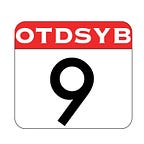John Balliol Becomes King of Scotland
Some historical figures aren’t relevant for any particular thing they. Some only matter in the context of what was happening around them, outside of their control. John Balliol is one of these. He started the Wars for Scottish Independence just by being weak leader.
Hello, and welcome to On This Date, Some Years Back. Today is November 17, 2017, and on this date, 825 years back, in 1292, John Balliol became the King of Scotland.
Margaret, Maid Of Norway and Queen of Scots died without issue in 1290, throwing Scotland into an interregnum which lasted two years. Of all the claimants to the Scottish throne, and there were many, John Balliol was chosen by Scottish nobles and King Edward I of England… Edward the Longshanks. Also known as the Hammer of the Scots.
Edward had long desired to rule over the entire island of Britain. Having successfully conquered Wales in 1284, Scotland was the only possession he lacked. He selected Balliol as a puppet king, one who would not be able to rally enough support to defy him, nor have the conviction to defy him. As such, Edward wasted no time in administrating Scotland as a vassal, a subordinate state, to his kingdom of England.
None of this sat well with the fiercely independent Scots. Soon, realizing what was going on, they deposed John Balliol and effectively replaced him with a council of twelve respected noblemen in 1295, just three and a half years into Balliol’s reign. This council struck a deal with France, the Auld Alliance, wherein both countries agreed to aid the other should it be necessary, with England being the key antagonist they both had in mind.
This infuriated Edward I, and since he couldn’t have Scotland through underhanded politicking, he would take it by force. In 1296, Edward invaded Scotland commencing the First War Of Scottish Independence. Shortly after, John Balliol abdicated the thrown, and was captured by the English. Edward imprisoned Balliol in the Tower Of London until 1299, when he was permitted to travel to France, there to be held in the custody of Pope Boniface VIII. He was freed in 1301, and remained in France for the remainder of his life.
Back in Scotland, the Wars for Scottish Independence would rage on until 1357. Scotsmen William Wallace and Robert the Bruce would become legends for their exploits during this time, with Robert becoming the first King of Scotland since John Balliol in 1306. He would reign until 1329, ending the First War Of Scottish Independence victoriously.
The peace would break once more when, after Robert’s death, Edward III of England backed Edward Balliol, John’s son, in a bid to capture the Scottish throne, which he did, with some dispute, until formally renouncing his clam 1356, ushering in the end of the Second War for Scottish Independence.
Scotland would remain free until 1707, when the two countries formally agreed to unite. This was 104 years after King James I Of Scotland joined the crowns of Scotland and England, making relations between the countries much better than they had been in the past, though not perfect.
As for John Balliol, it’s arguable that without his weak and ineffective reign, the Scots may never have united together to fight for their independence. As such, Britain may have been united much earlier, but with far less good will.
Thanks for reading, and be sure to check back tomorrow for the 20th worst flood in recorded history.
Creating quality content on a daily schedule requires a massive commitment, and my desire is to not only do that, but expand into even more mediums (audio podcasts, web videos, etc.). If you enjoy these posts, or would like for them to be available in other formats, please consider supporting me on Patreon. Just $1 a month will help a ton, as well as get you access to exclusive content. Thanks.
